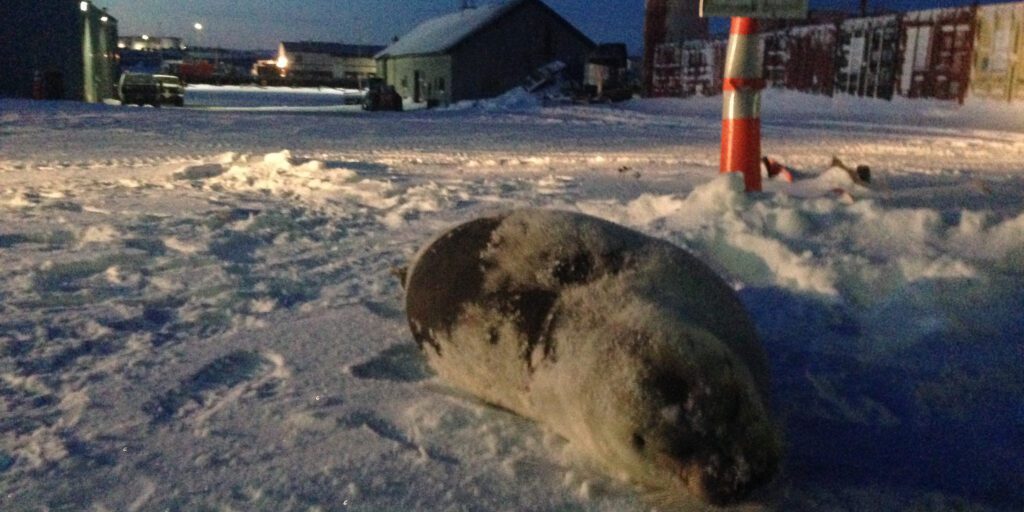The following is a developing story.
A Bearded Seal came ashore Thursday Night and made its way into a parking lot on Nome’s west side of town. Gay Sheffield was one of the first on the scene.
“We’re east of the harbor on Lomen right in front of the Crowley office building,” Sheffield explained, “and we have a young bearded seal that’s crawled out of the iced-over harbor and is in the parking lot.”
Sheffield works for the University of Alaska Fairbanks Alaska Sea Grant and is the local stranding responder. NOAA Fisheries created the National Marine Mammal Stranding Network to respond to incidents like this one. Local stranding responders like Sheffield are trained in stranding response, animal health, and disease.
Sheffield explained that this isn’t the first time a seal has made its way towards downtown Nome.
“Last year, we had a spotted seal that also got iced out of the harbor and was headed into town.”
But, often the stranded seals are on the smaller size. Kevin Keith explained that that wasn’t exactly the case with this one.
“It’s an ugruk, which are the bearded seals, which are quite large,” Keith said.
Keith is a fisheries biologist for Norton Sound Economic Development Corporation. Adult bearded seals average around 600 pounds, but this one was only a pup, which Keith estimates was 150 to 200 pounds.
While Sheffield is authorized to transport stranded marine mammals, due to this one’s size, she called for reinforcements.
Keith picked up a fish tote from the seafood plant.
“The fish tote is probably five feet by five feet, so we tipped the fish tote on its side, and Gay basically wrestled the seal into the fish tote,” Keith explained.
It took four people to lift the tote with the seal in it onto the bed of a truck. The seal was then transported to Nome’s Public Safety Building where it was kept overnight.

While much is still unknown about the health of the animal and the reason for its behavior, Sheffield said that the seal’s coat may hint at why it came ashore.
“What’s unusual is that he has symptoms of the seal sickness, where the seals have lost the ability to grow their coat,” Sheffield explained. “So this is why he’s looking so patchy.”
According to Sheffield, there are three different options for what to do next with the animal. The seal could be used for subsistence, released back into the wild, or sent down to the Alaska SeaLife Center in Seward, which handles marine mammal rehabilitation.
As of Friday evening, calls for an update on the seal were not returned.
To report a marine mammal stranding, call the statewide stranding hotline at (877) 925-7773.







